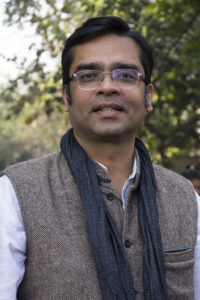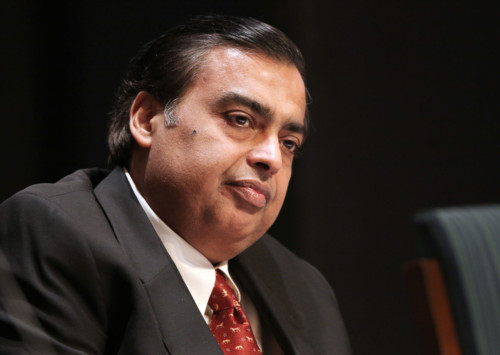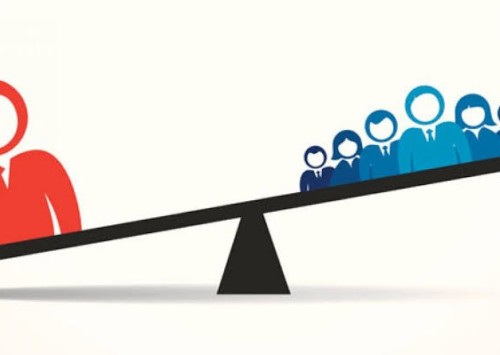Broken economies benefitting billionaires
As per the recent Oxfam Billionaires report, India’s richest 1 pc hold more than four-times the wealth held by 953 million people who make up for the bottom 70 pc. As economic growth benefits only 1 pc, Amitabh Behar, CEO, Oxfam India, talks to Media India Group about the reasons behind this growing inequality and also shares his views on how capitalism is damaging our economies and fracturing our societies.
As per the Time to Care study report, in India the richest 1 pc hold four times more wealth than 70 pc of poor. What have been the reasons behind this growing inequality? Would you say successive governments have failed to address the concerns of the latter?
Inequality is growing out of control across the world and governments have created this crisis. Successive governments have shaped their policies and created an economic system which benefits 1 pc of people at the expense of billions of poor particularly women and girls. Women and girls put in 3.26 billion hours of unpaid care work each and every day, contributing to the Indian economy which is 20 times the entire education budget of India in 2019.
While billionaire wealth soars, public services are suffering from chronic underfunding or being outsourced to private companies that exclude the poorest people. In many countries including India, a decent education or quality healthcare has become a luxury only the rich can afford. Children from poor families in India are three times more likely to die before their first birthday than children from rich families. The policies of the government are fuelling the gap.
We have repeatedly failed to rescue farmers from their plight, create decent jobs which provide living wage and social protection, invest in public services, and ensure that the super-rich pay fair share of taxes. It is obscene that we have allowed our economy to work for just 63 billionaires, who hold a total wealth which is higher than last year’s Union Budget of India.
What policy actions do you think are required to address this growing inequality?
Economic inequality is exacerbated by social factors like caste, class, gender and religion in India. This needs to be tackled on a war-footing. Discrimination in access to public services and lack of equal opportunity to earn decent wages are real challenges that India must address. Evidence from over 150 countries spanning more than 30 years shows that investing in healthcare, education and social protection significantly reduces inequality. The World Bank report has shown that agriculture can help reduce poverty for 80 pc of the world’s poor who live in rural areas. Agriculture sector in India is in distress and needs government’s urgent attention.
In low-income countries, women in rural areas spend up to 14 hours a day doing unpaid care work. Women and girls put in 3.26 billion hours of unpaid care work each and every day in India- spending billions of hours cooking, cleaning and caring for children and the elderly. They also consistently earn less than men and are concentrated in the lowest paid and least secure forms of work. We believe that the government can change the sexist economic system by prioritising ‘care’ as being as important as all other sectors in order to build more human economies that work for everyone, not just a fortunate few. There is significant evidence that higher wages and stronger labour rights – especially for women workers who tend to work in the lowest paid and most insecure jobs – are key to reducing inequality.
Government is also massively under-taxing the wealthiest individuals and corporations and failing to collect revenues. The tax structure should be more progressive. We need to cut down our reliance on indirect taxes and give emphasis on collecting more direct tax from the super-rich. Giving tax breaks, exemptions and cuts for the corporate sector would only increase their after tax profit. Instead the government should tax the big corporates and use the money to redistribute it in the form of more job creation for the poor and spend it in the social sector and for development of rural infrastructure.
What have been the trends and patterns of inequality in various dimensions in India?
Consumption expenditure has declined by 4.4 pc per annum in rural areas and 4.8 pc per annum in urban areas since 2015-16. As per economics professor Himanshu at JNU, “From the time that NSSO consumption expenditure figures have been available, there has never been such a sharp decline”.
The Periodic Labour Force Survey (PLFS) of the National Sample Survey Office (NSSO) released recently showed the unemployment rate in the country in FY18 was at 5.3 pc in rural India and 7.8 pc in urban India, resulting in overall unemployment rate of 6.1 pc.
Gini of wealth in India in 2017 is 0.83 which puts India among countries with high inequality. According to IMF India not only has one of the highest levels of inequality in the region, but it also shows very large increase in inequality since 1990.
India has made substantial gains in health and education outcomes in the past few decades. From 1991 to 2013, life expectancy at birth increased by more than seven years, the infant mortality rate fell by half, the share of births in health facilities more than tripled, the maternal mortality ratio fell by about 60 pc, and the total fertility rate fell to almost replacement level. The education system also expanded rapidly, leading to gross enrolment ratios of 100 and 95 in primary and upper-primary classes respectively (NUEPA 2015).
Do you actually think that capitalism in its current form is doing more harm than good? If yes, then how?
The reason why many people live in poverty in rich countries, as well as poor countries, is inequality. Capitalism’s great engine of growth has also become one of great inequality. A survey conducted by Edelman delineated that 56 pc of those surveyed thought that capitalism was doing more harm than good “despite another year of solid economic growth and near-full employment in many developed countries”. (Economic Times, 2020).
Billionaires are a sign of economic failure, not success. So much wealth held in so few hands is damaging our economies and fracturing our societies. No wonder people are starting to question whether billionaires should even exist.
A healthy market economy is key to tackling poverty and inequality but we don’t have that. We have an extreme form of capitalism that only works for those at the top. Yet governments are not helpless in the face of technological change and market forces. They need to start managing our economies so that they work for everyone and not just the fortunate few.
The labour force participation rate of Indian women is very low compared to other Asian countries. What is the major reason behind this?
The urban labour force participation rate has remained largely stagnant, sliding marginally from 20.5 pc in 2011-12 to 20.4 pc in 2017-18. It is nonetheless low by global standards. The top two sectors employing women in urban centres in India are the textiles and domestic work sectors. Such work is not commensurate with the advanced educational levels that many women have achieved. In effect, there are no decent, appropriate jobs for educated women to engage in. This is why unemployment rates are highest among women with advanced education in India.
In contrast to the urban scenario, there is a decline in workforce participation for rural women – from 35.8 pc to 24.6 pc over the same period. In rural India, the falling female participation is largely due to the income effect. With rising incomes, a woman no longer prefers to work as an unpaid worker or a casual labourer. However, the limited opportunities as well as the dearth of low-skill jobs in the non-farm sector, women are unable to find jobs that would match their preference and have, thus, withdrawn from the workforce (Sanghi, Srija and Vijay, 2015).













